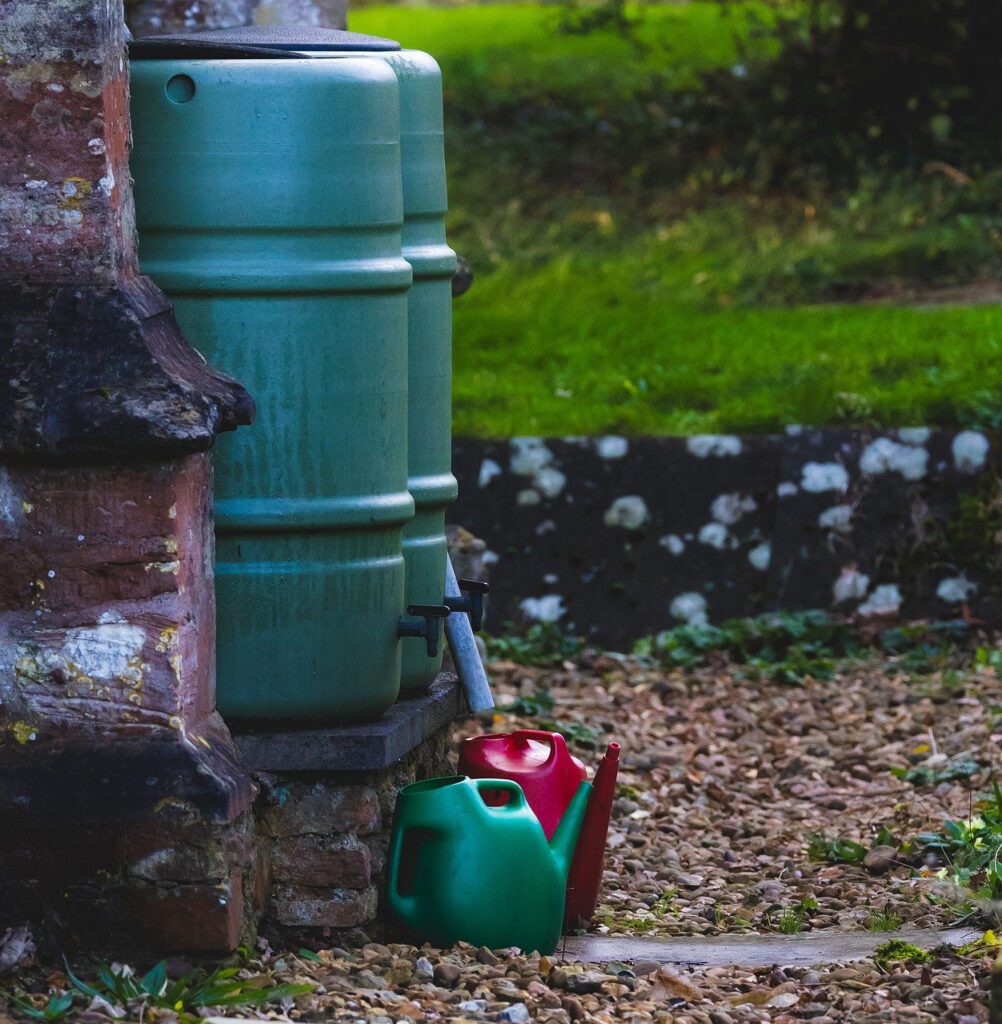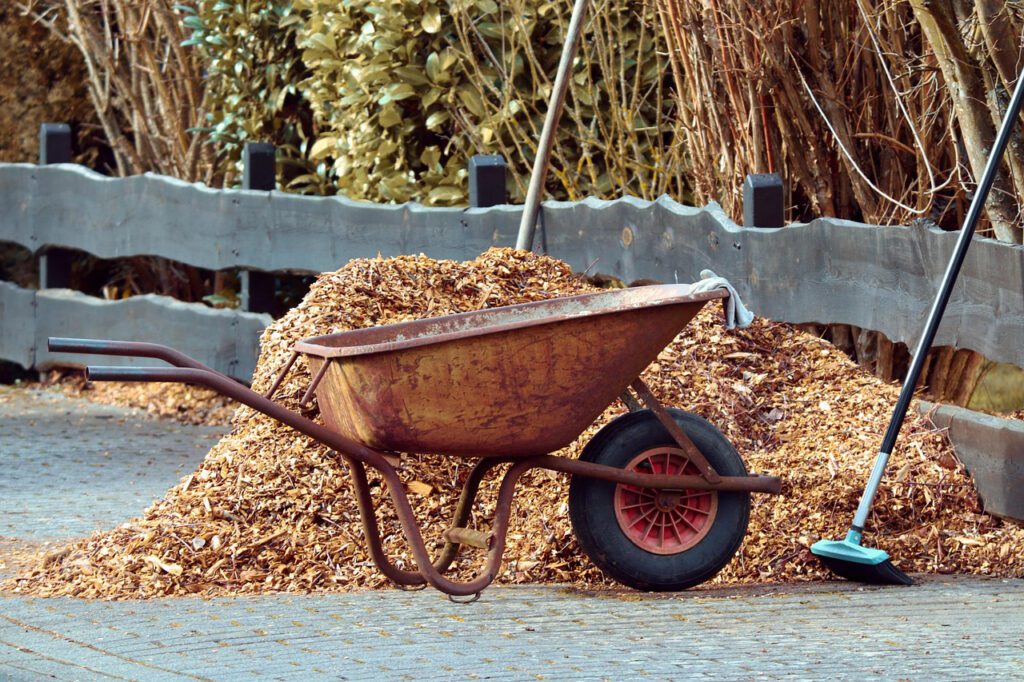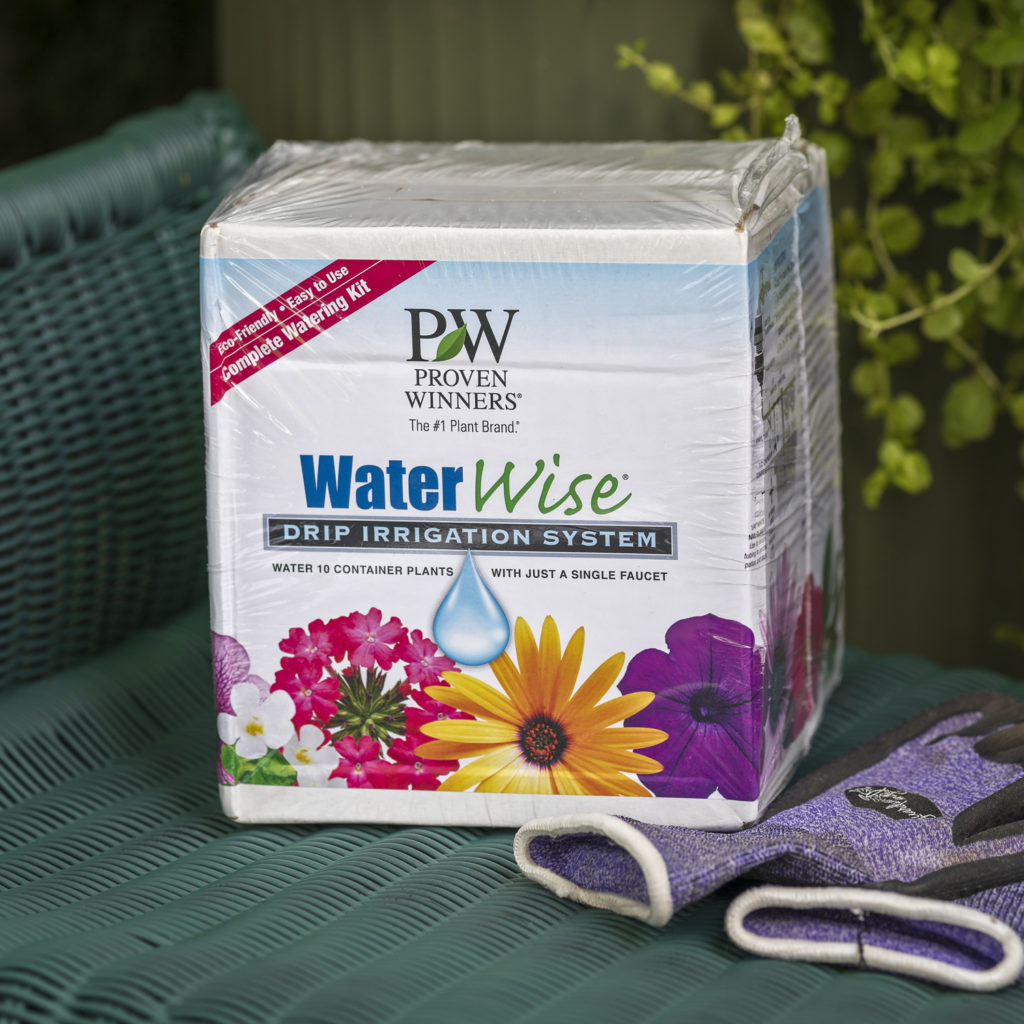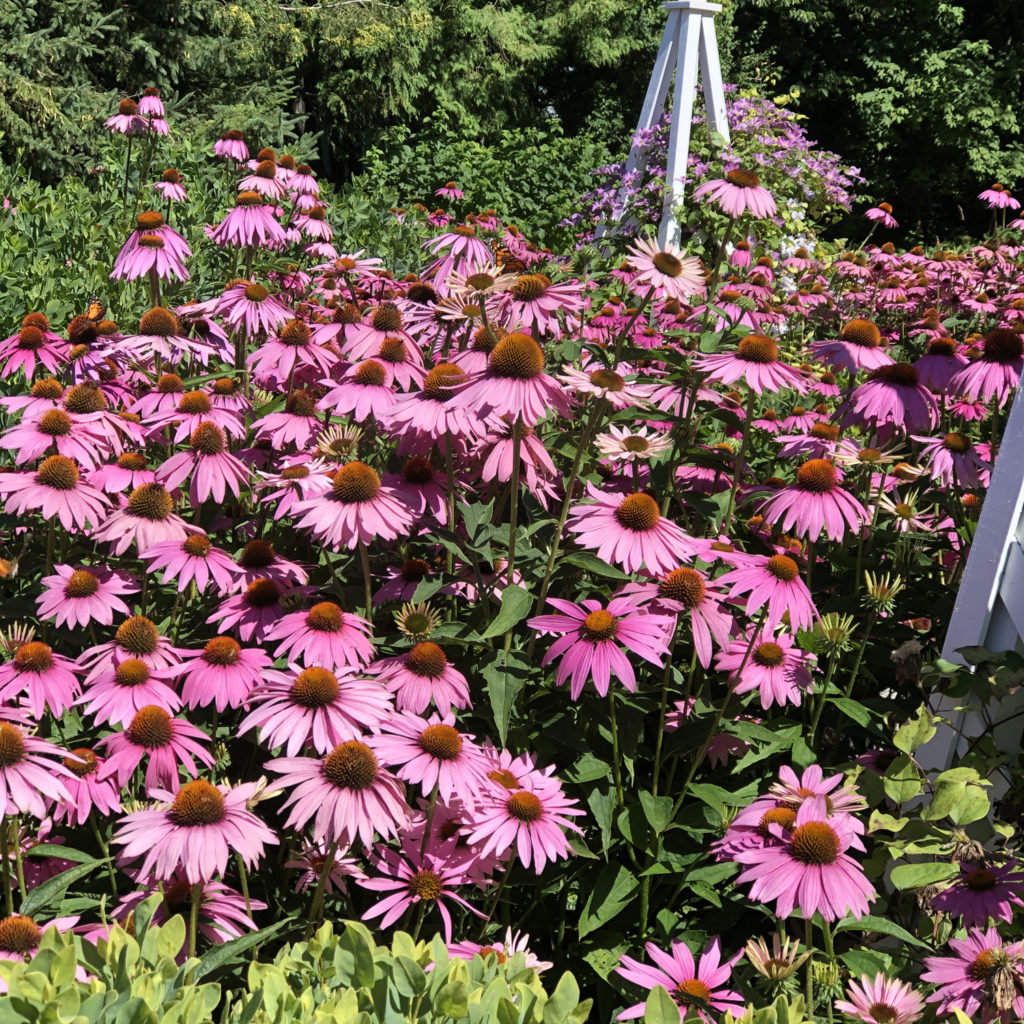Whether due to necessity or choice, finding ways to conserve water in the garden is top of mind for many homeowners today. You’ll save time, money and resources by following the five tips in this helpful article.
#1 – Switch to Self-Watering Containers
Every time you water plants growing in traditional containers with drainage holes in the bottom, excess water is wasted, carrying with it traces of the fertilizer you’ve diligently been applying. While this has long been standard practice, there is a better way that conserves water.
Self-watering containers like our Weekender® hanging basket and AquaPots®, as well as AquaPots Inserts (available in our retail garden center), retain water in a catch basin and slowly release it to the plants’ roots as needed. None is lost through the drainage holes, and when you add continuous release plant food to the basin, your plants will flourish from having a continual supply of nutrients.
Self-watering containers save time and money since they only need to be refilled every few days to a week, and they are lighter on your water bill, too.
#2 – Use Drip Irrigation and Water Early in the Morning
While self-watering containers are ideal for using less water, drip irrigation also conserves moisture by delivering it right to your plants’ roots. Unlike overhead irrigation and sprinklers, you won’t lose any of the water being pumped out due to evaporation. Watering early in the morning before the heat of the day arrives can also conserve moisture and help to avoid plant disease issues down the road.
Drip irrigation isn’t only for landscapes. Our WaterWise® drip irrigation kit is ideal for watering containers – ten at once with a single kit or up to 30 if you connect three kits together. Add a timer at the faucet connection to automate the system and you won’t even have to think about watering your containers all summer.

#3 – Collect Rainwater
See a storm brewing? Set out any buckets or tubs you have to collect the rain. If there’s a spot where your gutters tend to overflow, make sure to set a bucket there, too. Rain barrels are also excellent at capturing rainwater to use at a later date. All sorts of plants, including houseplants, can benefit from rainwater. After the storm has passed and dry weather has returned, you’ll be glad you took the time to collect it. Just be sure not to leave standing water around too long, since mosquitoes like to breed in it.

#4 – Mulch Your Garden
An excellent way to prevent rapid evaporation of your soil’s moisture is to cover any open ground with shredded leaves, pine straw, wood, bark or stone mulch, or to use groundcover plants as “living mulch”. All of these things act as a blanket to help the soil stay moist longer, giving plants more time to use the moisture and stay cooler in the process.
Wood and shredded bark mulch have the added benefit of forming humus as they break down, which further aids in moisture retention. Using soil amendments like mushroom compost and peat moss can also help to keep your soil moist for longer after it rains or is irrigated.
#5 – Grow Drought Tolerant Plants
When time or resources are limited, you’ll be thankful for the plants in your garden that won’t skip a beat if the soil gets a little dry. Drought tolerance can range from slight to extreme, but eventually all plants need at least a little moisture to grow. Conserve water by planting some varieties that can thrive without consistent moisture.
Check out 30 of our top-recommended drought tolerant perennials and shrubs as well as tips for growing them, or explore our entire list of over 400 varieties of plants that can handle dry spells.



